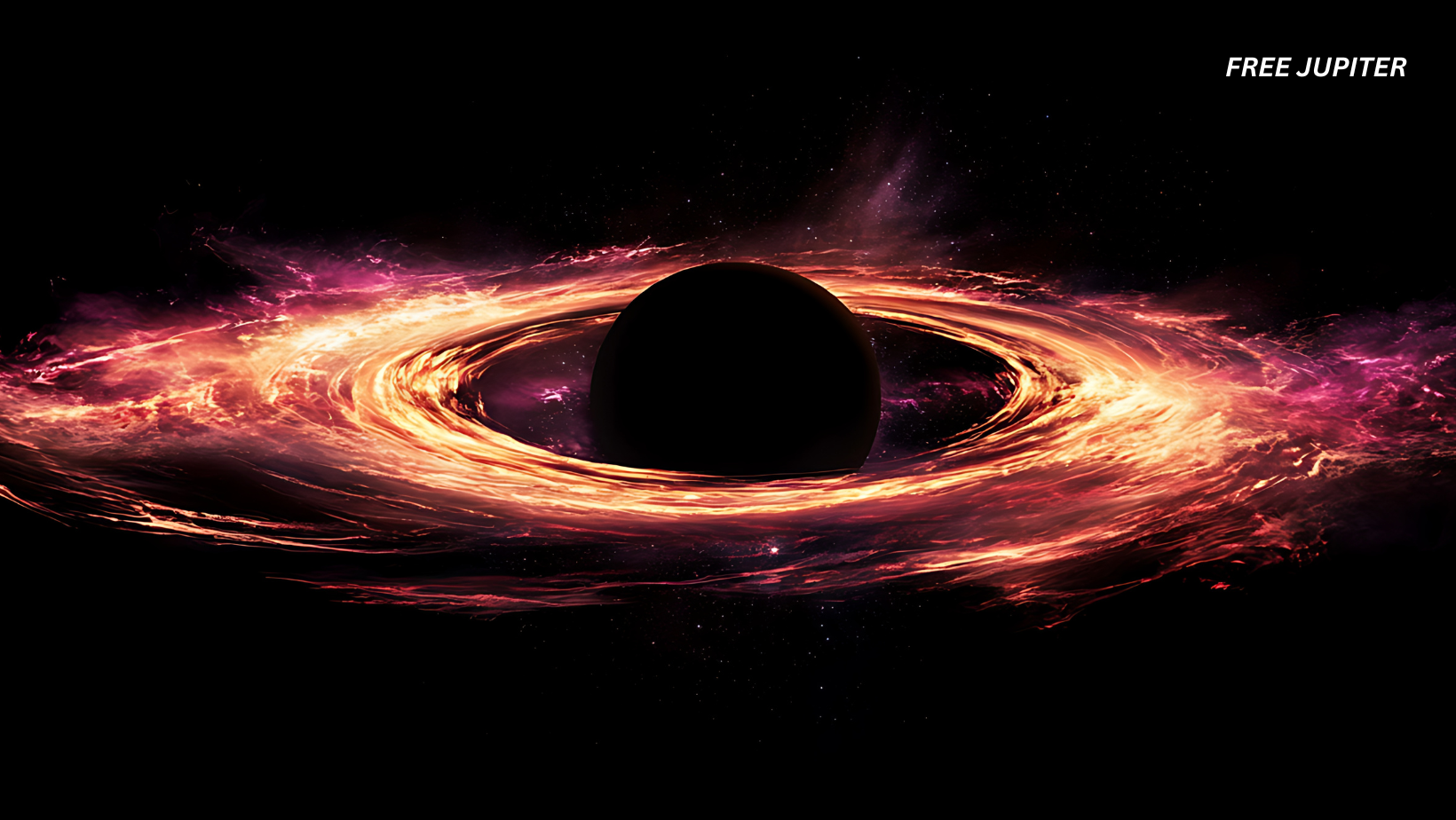Black holes have always carried an air of mystery, often imagined as cosmic vacuum cleaners that swallow everything in sight. But the reality is far more complex—and far stranger. At the center of the galaxy M87, located about 55 million light-years away, lies one of the most fascinating black holes ever studied. Known as M87*, this gargantuan object has surprised astronomers yet again, revealing new clues about the forces at work in the deepest corners of space.
A team of scientists watching M87* through the Event Horizon Telescope (EHT) recently noticed something unusual. The magnetic fields around the black hole appeared to have flipped their orientation between 2017 and 2021. For astronomers, this wasn’t just unexpected—it was a revelation that challenges some of the most established ideas about how black holes behave.
A Quick Refresher: What Exactly Is a Black Hole?
To understand why this discovery is such a big deal, let’s break down what a black hole really is.
- A black hole is a region in space where gravity is so intense that nothing—not even light—can escape once it crosses a certain boundary called the event horizon.
- The “supermassive” kind, like M87*, are millions or even billions of times heavier than our Sun. They sit in the centers of galaxies, influencing the movement of stars, gas, and even shaping how galaxies evolve.
- Instead of being empty, black holes are surrounded by an accretion disk—a swirling whirlpool of hot gas and dust being pulled toward the event horizon. This disk glows brightly as matter heats up, and it’s here that astronomers detect light signals telling them what’s happening around the black hole.
M87* is a heavyweight among heavyweights, estimated to be about 6.5 billion times the mass of the Sun. It’s so huge that its event horizon would stretch wider than our entire solar system.
Read more: There’s A 90% Chance of Black Hole Explosion in the Next Decade, Scientists Say
The Event Horizon Telescope: A Global Eye on the Invisible
You might be wondering—how do you take a picture of something that swallows light? The answer is both clever and complicated.
The Event Horizon Telescope (EHT) isn’t a single telescope. Instead, it’s a worldwide collaboration linking radio observatories across the globe. By combining data from multiple telescopes, scientists effectively create a telescope the size of Earth itself. This method, called very long baseline interferometry, allows astronomers to capture details that no single telescope could ever resolve.
In 2017, the EHT pointed this giant virtual eye at M87*. After years of data crunching, the team released the first-ever image of a black hole in 2019: the famous glowing orange “donut.” This wasn’t just a pretty picture. It was a landmark scientific achievement that confirmed predictions made by Einstein’s theory of general relativity.
Light With a Twist: The Importance of Polarization
The new findings focus on something called polarization. In simple terms, polarization is the orientation of light waves as they travel. Think of light as a wave that wiggles—polarization tells us which way it’s wiggling.
When light interacts with magnetic fields, it can become polarized. By studying the polarization of light near a black hole, astronomers can indirectly map the structure of the magnetic fields around it.
Here’s the surprising part: between 2017 and 2021, the polarization pattern around M87* actually flipped. Imagine looking at the same glowing ring of light around the black hole, but noticing that the “grain” of the light waves has rotated in a completely different direction.
This may sound like a small detail, but it’s like opening a door to a hidden layer of black hole behavior that was invisible before.
What Could Cause the Flip?
The flip in polarization suggests that the magnetic fields near the event horizon aren’t stable, but instead undergo major changes over relatively short timescales. There are a few possible explanations:
- Chaotic Plasma Flows – The hot, magnetized gas swirling around the black hole could be rearranging itself in unpredictable ways, leading to a shift in polarization.
- Magnetic Reconnection – Similar to solar flares on the Sun, magnetic fields near the black hole might snap and reconnect, releasing bursts of energy and altering the field’s orientation.
- Jet Interaction – M87* is famous for shooting out a massive jet of particles at nearly the speed of light. Changes in the way this jet connects to the black hole’s magnetic fields could also drive a polarization flip.
Whatever the cause, the discovery makes it clear that the environment near the event horizon is dynamic and turbulent, not static.
Black Hole Jets: Cosmic Power Beams
One reason this discovery is so exciting is that it ties into another long-standing mystery: how black holes produce their massive jets of energy.
M87*’s jet is enormous, stretching thousands of light-years into space. It shoots out streams of plasma so powerful they can shape the surrounding galaxy. Yet, despite decades of research, scientists still don’t fully understand how black holes generate these cosmic blowtorches.
Magnetic fields are thought to be a key ingredient. They may act as a kind of funnel, channeling energy from the spinning black hole into a narrow, focused jet. The fact that M87*’s magnetic fields can flip shows just how flexible and unpredictable this process might be.
Read more: First-Ever Recording Captures Black Hole “Kicked” Across Space And Time
A Growing Toolbox for Black Hole Science
Part of the reason scientists caught this flip is because the EHT network has expanded. In 2021, several new telescopes joined the collaboration, increasing sensitivity and resolution. With more “eyes” on the black hole, the team was able to detect subtle polarization signals that had been invisible before.
This expansion is turning the EHT into more than just a picture-taking project. As University of Naples professor Mariafelicia De Laurentis explained, the observatory is now capable of building “a progressive and coherent understanding of black hole physics.”
In other words, the EHT is no longer just snapping portraits—it’s making time-lapse movies of black holes in action.
Why This Matters Beyond Astronomy
You might ask, why should anyone care if a black hole’s magnetic fields flipped? Beyond the sheer wonder of discovery, there are big implications:
- Galaxy Evolution: Supermassive black holes like M87* influence the fate of entire galaxies. Their jets and winds can regulate star formation, shaping how galaxies grow.
- Fundamental Physics: Observing how matter and energy behave in the extreme environment near an event horizon tests our deepest theories of gravity, magnetism, and plasma physics.
- Cosmic Weather: Understanding magnetic activity near black holes could even shed light on phenomena closer to home, like solar storms and space weather.
In short, learning how black holes work helps us understand the universe at both the largest and smallest scales.
What’s Next for M87* and the EHT
The story of M87* is far from over. With each round of observations, scientists refine their models and uncover new surprises. Future goals include:
- Tracking Polarization Over Time – Was the flip a one-time event, or part of a repeating cycle?
- Comparing With Other Black Holes – The EHT has also imaged the black hole at the center of our own galaxy, Sagittarius A*. Do similar flips happen there too?
- Sharper Images – As more telescopes join and technology improves, astronomers hope to capture higher-resolution images that reveal even finer details of black hole physics.
Read more: Gravitational Wave Detector Has Confirmed Einstein and Hawking’s Black Hole Theories
A Black Hole With Personality
Black holes once seemed like simple, silent voids—cosmic one-way doors where physics ends. But M87* is teaching us that they’re far from lifeless. With turbulent plasma, shifting magnetic fields, and energy jets that span galaxies, black holes are engines of change.
By flipping its polarization, M87* has reminded scientists that the universe still has plenty of surprises in store. Even in the darkest regions of space, there is movement, complexity, and mystery waiting to be uncovered.
And perhaps that’s the most exciting part: the realization that the more we learn about black holes, the stranger—and more fascinating—they become.
Featured image: Freepik.
Friendly Note: FreeJupiter.com shares general information for curious minds. Please fact-check all claims and double-check health info with a qualified professional. 🌱










